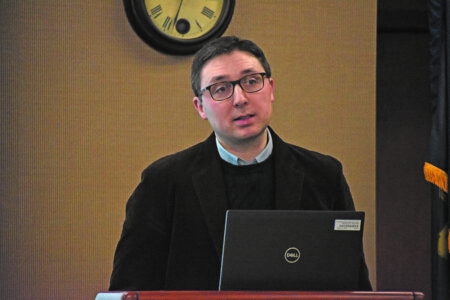Finnish education system; equal opportunities for everyone
For years, Finland has had one of the best education systems in the world. Last year was no exception, as Finland was on top of the list again. Compared to the U.S, Finnish students are especially advanced in science, math, and reading. So, how do they do it?
At the age of five or six, nearly every child goes to preschool. Preschools, organized by municipalities, are free of charge for parents. Kids are provided with a warm meal during the four-hour day, and things such as math, art, culture, and environmental awareness are learned through play.
What makes this preschool system so great is that mothers get to go back to work. After being on maternal leave for four months and parental leave for nine months (fathers can also use parental leave), it is very rare that mothers stay home with their kids.
After preschool, at the age of seven, kids start their basic education. One of the keys for Finland’s education system is that all the basic education system teachers are required to have a master’s degree.
In addition to all the basic subjects and craft education, kids also start learning English in the first grade. Once they reach the fourth grade, they have the option to start learning a third language, like German, Italian, Spanish, or Russian, for example.
To make learning as stress-free as possible, kids are provided with free school meals, health and welfare services, and learning materials. Short, 45-minute lessons, on the other hand, help the kids concentrate better throughout the day.
They also have the option to take the school bus if they live in a remote location. However, kids usually walk or ride a bike to school by themselves, no matter how much snow there is. In fact, my first snow day ever was in college.
As kids advance to grade seven (age 13), they start learning Swedish, which is the second official language in Finland. In some schools, all the subjects are taught in English or Swedish.
Grades seven, eight, and nine are meant for upper secondary school preparation. There are no standardized tests, but the GPA in these grades is important for each student. Even though all the high schools are free and private schools do not exist, they have different GPA requirements.
If a student’s GPA is not good enough for any high school, they can apply for vocational education. However, this isn’t only meant for dummies, by any means. High school prepares students for university studies, whereas some kids might have a passion for cars, for example. Even if someone does really well in school, they might want to go to vocational school and become a construction worker, mechanic, electrician, chef, plumber, or something else.
Upper secondary education used to be optional in Finland, even when I was still in high school, but recently it was made mandatory for everyone to stay in school until they are 18 years old.
The schools in Finland feature a relaxed atmosphere, with homework being on the rare side, short school days that end as early 1 p.m., and long breaks carry on to high school atmosphere.
After completing all their classes, high school students complete the matriculation examination. It is required that each student completes at least four tests, in order to pass. Each test lasts for three to six hours and they are quite demanding, which is why students do not have any school for a month before the tests. This time is used for studying and preparing for the matriculation examination. Math, Finnish, and one foreign language are mandatory, the rest is up to each individual.
If the students passes the tests, he or she graduates from high school. A natural path after high school graduation leads to university studies. When applying, the matriculation examination results are important. However, the most important thing is the entrance exam. University studies are also free in Finland, which is why there is a lot of competition. It is natural for first-time applicants to not get into school their school of choice if they want to study law, for example. In this case, applicants usually take a year off and study for the next year’s exam. Most men complete their mandatory military service during this year.
In Finland, it takes three years to get a bachelor’s degree and two additional years to get a master’s degree. If you want to take another route after high school or vocational education, universities of applied studies are a great option. Universities of applied studies provide more practical education that fills the need of the labor market. These studies last for approximately four years and offer fields such as natural resources and the environment, culture, tourism, social services, and business and administration. Professions such as a forestry engineer, musician, hotel worker, nurse, or sales negotiator can be reached through universities of applied studies.
The Finnish school system is among the best in the world for a reason. In addition to quality teachers and countless opportunities, the most important thing, in my opinion, is equality. No matter where you’re from, no matter what your family income is, you have the same resources for success as the person next to you.
EDITOR’S NOTE: Roni Salmenkangas is a student athlete at Ferris State University, majoring in sports communication. For the most part, Roni’s stories focus on Finnish culture and people. He is completing his internship from Tampere, Finland.






